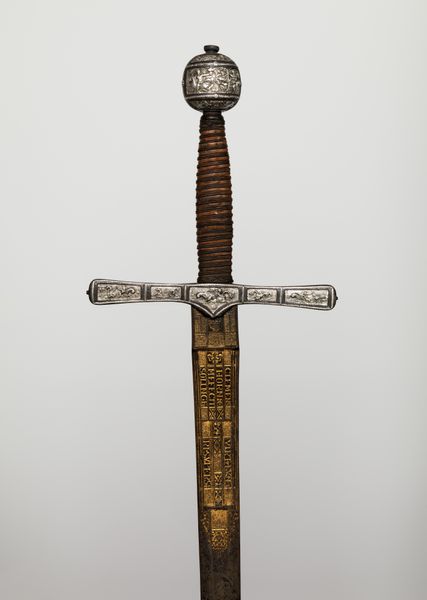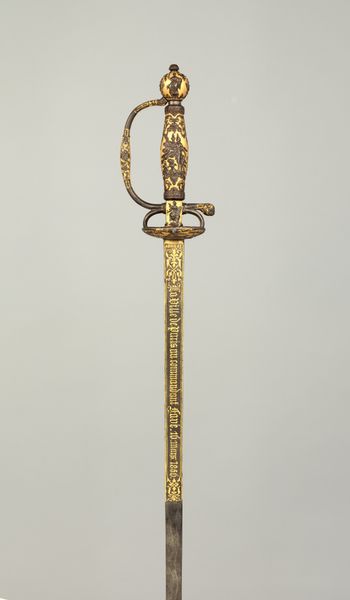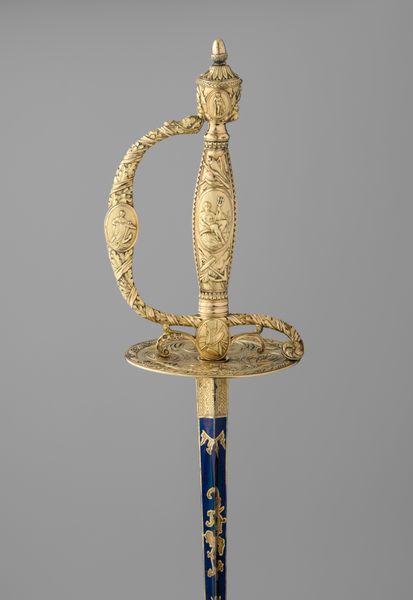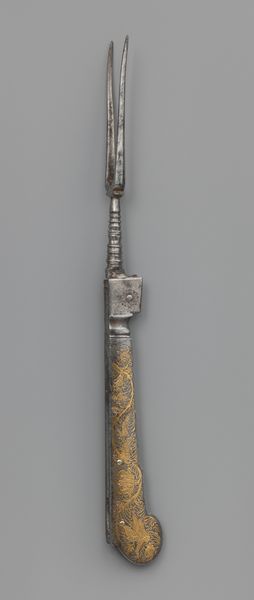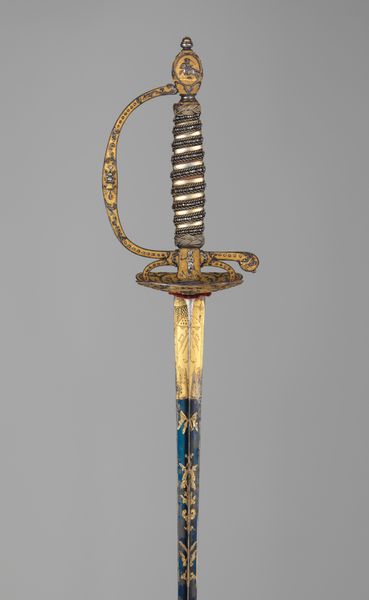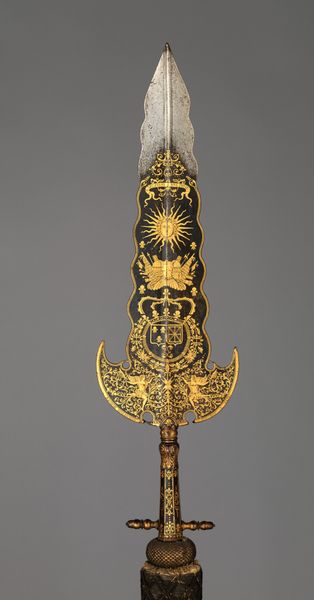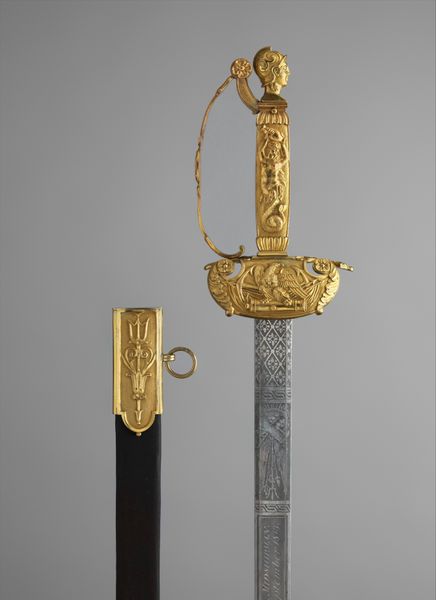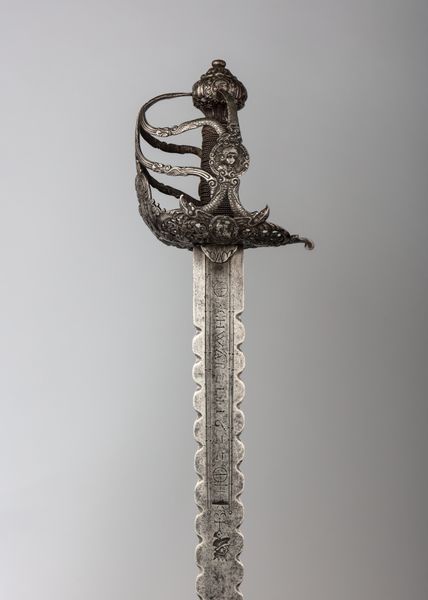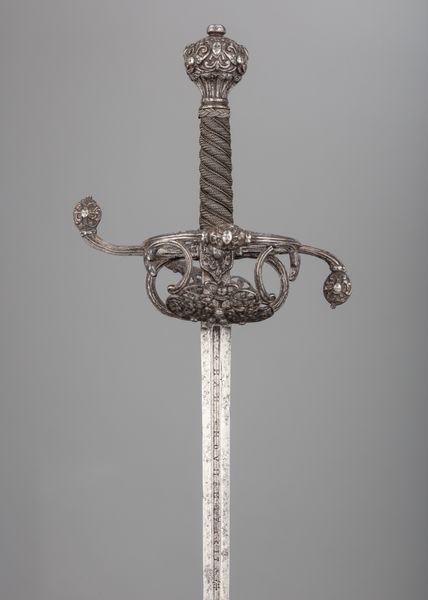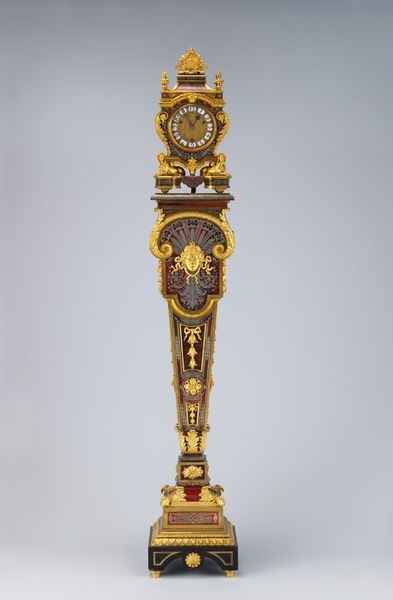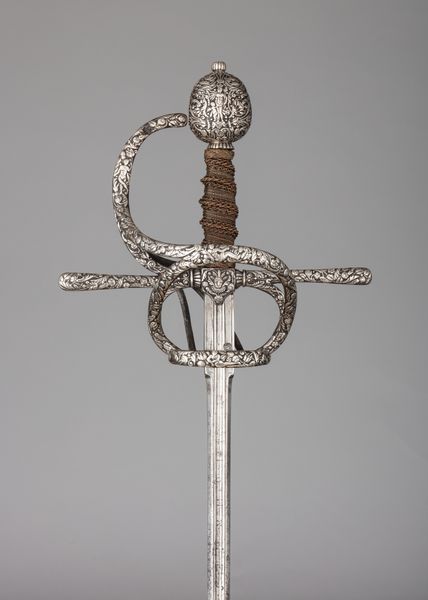
carving, metal, sculpture
#
portrait
#
carving
#
metal
#
sculpture
#
sculpture
#
romanticism
#
armor
#
decorative-art
#
sword
Dimensions: L. 26 15/16 in. (68.5 cm)
Copyright: Public Domain
Curator: This object is a hunting sword, crafted sometime between 1800 and 1850. It is currently held in the collection of the Metropolitan Museum of Art. Editor: My first impression is, wow, look at the level of intricate detail. It’s ornamental; the decoration suggests its purpose might be largely ceremonial, or at least for very high-status hunts. Curator: That's right. Hunting swords like this one weren't just weapons; they were potent symbols of aristocratic privilege. The sword would have been commissioned by a wealthy patron, as decorative-art arms and armor became status symbols. Editor: I’m especially drawn to the hilt. That striking lion's head handle - can you tell what material it’s made from? The entire process of production must have been painstaking. Curator: Indeed. The handle's craftsmanship displays sophisticated carving techniques, probably from agate or similar hardstone. Also note the detailed enamel work along the guard, featuring intricate floral motifs, and a crest. Each of these decorative decisions served to broadcast a very specific, elite identity. Editor: Enameling’s a pretty labor-intensive process too, with layering and firing involved. It’s clearly designed to be a feast for the eyes— the use of gold, bright colors—everything shouts opulence. What social circumstances would give rise to such elaborate weaponry? Curator: As European societies shifted and aristocratic power faced new challenges, these objects functioned as assertions of tradition, linking owners to bygone eras of unquestioned authority. Owning something like this was a clear claim of social dominance. Editor: It's interesting to think about what happens when tools of power transform into artworks. This is no longer merely about hunting, is it? It’s about spectacle and status, with materials acting as a signal of both personal wealth and the inherited power structures that support it. Curator: Precisely. In a rapidly changing world, owning and displaying something like this hunting sword was a deliberate political act. Editor: Seeing such elaborate craftsmanship and lavish materials really highlights the ways in which art objects encode economic and political histories. Curator: Yes, it reminds us that objects, no matter how beautiful, are deeply intertwined with social forces.
Comments
No comments
Be the first to comment and join the conversation on the ultimate creative platform.
